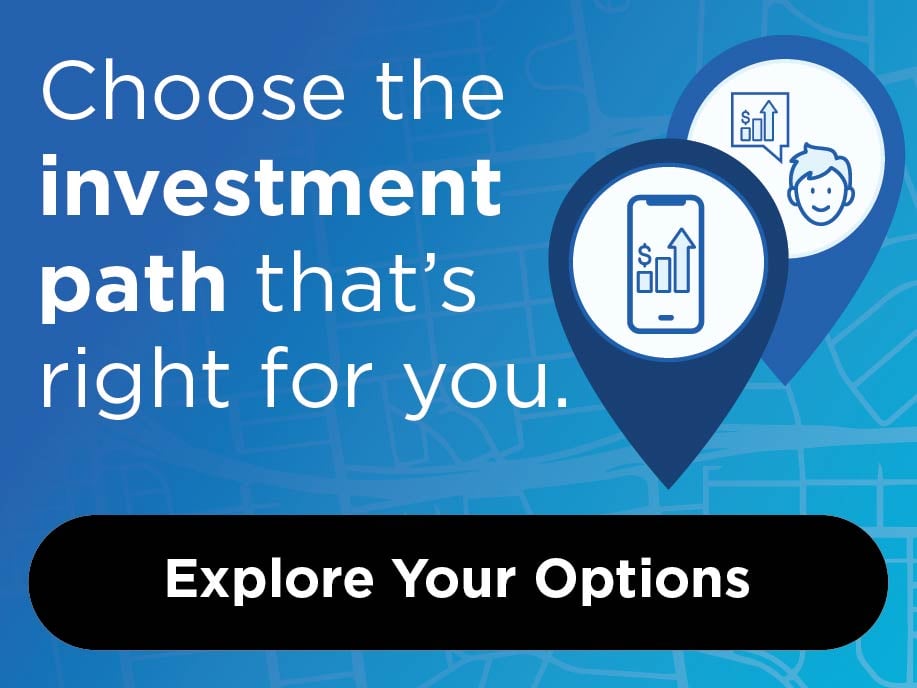
For many people, financial decisions happen one at a time—adjusting investment contributions here, paying off debt there, or planning for a child’s education. Each choice may be appropriate on its own, but without a broader framework, it’s easy to lose sight of how the pieces work together. A written financial plan connects those pieces into a strategy that moves you forward with clarity and confidence.
Why a Written Plan Matters
A comprehensive plan puts everything in one place—your goals, timelines, accounts, and next steps. It reduces uncertainty, highlights opportunities, and helps you move forward with clarity. Instead of asking, “Am I doing enough?” you’ll know exactly where you stand and what to do next.
Our Seven-Step Planning Process
1) Assess Your Portfolio (Risk)
Markets fluctuate—it’s inevitable. What matters is whether your portfolio is built to weather the ups and downs while staying aligned with your goals. We start by reviewing what you currently hold and how those assets work together. Do they align with your goals and time horizon, or is risk sneaking in where it doesn’t belong?
Sometimes, the issue isn’t that a portfolio is too aggressive, but that it isn’t diversified in the right way. Our goal is to “right-size” risk—ensuring your investments are designed for your needs, not simply chasing returns.
2) Fee Analysis
Fees are part of investing, but they shouldn’t be a mystery. We make them transparent, so you know exactly what you’re paying—and why. Often, this clarity reveals opportunities to simplify or consolidate. Even small reductions can add up, creating savings you can put toward the goals that matter most.
3) Tax Review
Taxes touch nearly every financial decision—from which account you draw from in retirement to when you sell an investment. We review your tax picture across the short and long term, looking for opportunities to be more efficient.
That might include strategies like shifting assets into tax-advantaged accounts, coordinating with your CPA on deductions, or planning charitable gifts in a tax-smart way. The result is fewer surprises and more money staying in your pocket.
4) Income Plan
Your income plan is foundational to your financial life. It’s how you balance saving for tomorrow while living well today. Together, we map out a clear blueprint for how money will flow in and out, aligning savings, debt repayment, and big-picture goals.
This includes retirement contributions, education funding, mortgage payoff strategies, and lifestyle priorities. With a plan in place, you won’t just feel like you’re working hard—you’ll see how each decision moves you closer to what matters most.
5) Social Security Analysis
While Social Security may feel far off for some, it plays a major role in retirement planning. Timing your benefits can significantly affect your lifetime income, especially when spousal and survivor benefits come into play.
The right choice depends on your health, marital status, work plans, and goals—but having the options laid out clearly means you can make the decision that best supports your long-term stability.
6) Life & Long-Term Care Review
Insurance and long-term care coverage often receive less attention than investments, but they are essential to protecting what you’ve built. We review your current policies to ensure they fit your stage of life and provide the right level of security.
7) Estate Planning
A strong plan also looks ahead to how your legacy will be managed. We review your wills, powers of attorney, healthcare directives, and beneficiary designations to make sure they reflect your wishes.
This step isn’t just about transferring assets. It’s about reducing stress for your loved ones and ensuring clarity during life’s most important transitions.
When to Check In
Financial planning isn’t a one-time event. A comprehensive review at least once a year keeps your plan up to date. It’s also worth revisiting whenever life changes—a new job, a family shift, a move, or even something as simple as buying a new home. These moments are natural triggers to pause, reassess, and adjust.
If you’re just starting out, this could be the perfect time to establish a plan and set a foundation for the future. And if you’re already working with an advisor, getting a second opinion can provide reassurance—or reveal opportunities you may not have considered. Either way, checking in ensures your plan grows and adapts right alongside you.
How We’ll Work Together
At CommunityAmerica, we believe financial planning should be a partnership. We’ll work with you to build a financial plan—one that evolves as your life does. With clear action steps, ongoing guidance, and regular check-ins, you’ll always know where you stand and where you’re headed.
Schedule a complimentary conversation with a Wealth Advisor today. Together, we’ll help you take the next step toward financial peace of mind.




